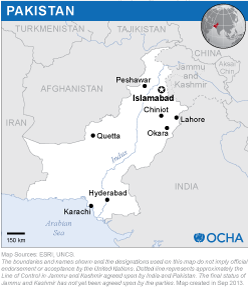The Space and Upper Atmosphere Research Commission (SUPARCO) of Pakistan and the United Nations Office of Outer Space Affairs (UNOOSA) signed the cooperation agreement on the establishment of a UN-SPIDER Regional Support Office (RSO) on the occasion of the 47th Scientific and Technical Subcommittee session on 12 February 2010.
In October 2014, SUPARCO, in cooperation with UN-SPIDER, elaborated and published the booklet "Effective use of Space-based information to monitor disasters and its impacts: Lessons Learnt from Floods in Pakistan" The booklet describes SUPARCO's experience in utilizing satellite data for floods in Pakistan, such as SPOT data or Aqua/Terra satellite data. This booklet specifically looks at the floods of 2010, 2011, 2012 and 2013, and the lessons learnt from these experiences.
SUPARCO developed 3x recommended practices for UN SPIDER Knowledge Portal. Developed and published recommended practices are:
- Recommended Practice: Flood Hazard Assessment | UN-SPIDER Knowledge Portal)
- Recommended Practice: Flood Mapping and Damage Assessment using Sentinel-2 (S2) Optical Data | UN-SPIDER Knowledge Portal)
- Recommended Practice: Agriculture Drought Monitoring and Hazard Assessment using Google Earth Engine | UN-SPIDER Knowledge Portal)
- More than 100 engineers and scientists
- More than 150 support staff
Space Assets
SUPARCO has 2x communication satellites i.e. PakSat-1R (2011) and PakSat MM-1 (2024) and 4x remote sensing satellite i.e. PRSS-1 and PAKTES-1A (2018), EO-1 (2025), EO-2 (2025).
Infrastructure
Latest state of the art hardware & software available with high speed internet connectivity on 24/7 hours basis.
Facilities
- Space Application Centre for Response in Emergency and Disasters (SACRED)
- National Centre for Remote Sensing & Geo-Informatics
- Atmospheric Data Receiving and Processing Centre
- COSPAS-SARSAT (Ground segment)
- National Centre for Agriculture Information (NAIC)
- Space Tech Application Directorate
- Spatial Planning and Governance Application Directorate
Space Application Centre for Response in Emergency and Disasters (SACRED)
SUPARCO established dedicated a “Space Application Centre for Response in Emergency and Disasters” in 2014 with aim to provide space based support to National/Provincial Disaster Managements (N/PDMAs) in the event of national disasters. SACRED has state of art facilities and specialized human resource. SACRED is the focal point for national and international organizations including UN-SPIDER, International Charter Space and Major Disasters, Sentinel Asia and APSCO.
DisasterWatch
SUPARCO developed Web GIS portal namely DisasterWatch for near real time dissemination of Space based information in the events of natural disasters. Disaster Watch can be accessed at http://disasterwatch.sgs-suparco.gov.pk . DisasterWatch provides space based information regarding developing disaster situation, rapid damage assessment, reconstruction and rehabilitation activities. DisasterWatch currently provides information related to flood, drought, landslide, GLOF, heatwave, forest fire, SMOG/FOG, earthquake disasters.
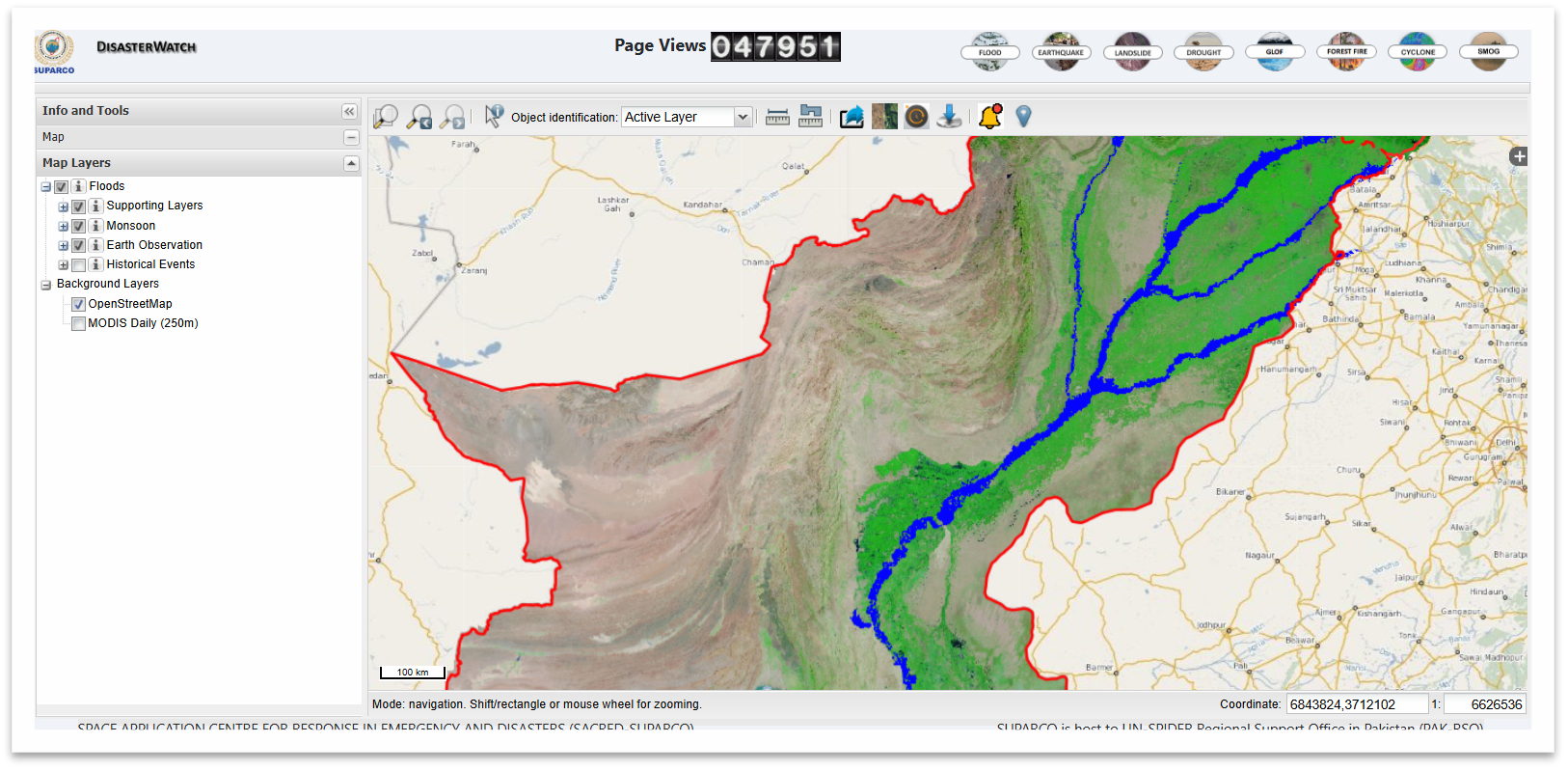
Training/courses Offered
SUPARCO offers specialized training courses for different sectors. Some of the courses are:
- Space based disaster management – Shifting from Reactive to Proactive Approach
- Hands-on training on the Integrated Search and Rescue space based system - COSPAS-SARSAT
- Advanced Applications of Water Resource Management using Satellite Remote Sensing
- Remote Sensing for the Environment and Modeling Air Quality and Climate Change
- Advanced Applications of Forestry in Remote Sensing & GIS
- Remote Sensing & GIS Applications in Geology
- Advanced Training Course on SRS & GIS
- RS & GIS application in natural resource management
- Programming for Web GIS Development using Open Source Technologies
- Introduction to Machine Learning in Remote Sensing
Natural Catastrophe Modeling
SACRED-SUPARCO developed the Natural Catastrophe Model (NatCat) for National Disaster Risk Management Fund (NDRMF). NatCat assesses probabilistic Hazards, exposure, vulnerability and Risk/Loss assessment against 9x perils i.e. flood, urban flood, flash flood (Nari basin), drought, heatwave, cyclone, earthquake, tsunami, landslide. NatCat model outcomes include NatCat Risk Calculator, Spatial Planning Interface for Ministry of Planning Development and Special Initiatives (MoPD&SI) and DRR Interface for Federal Flood Commission (FFC).
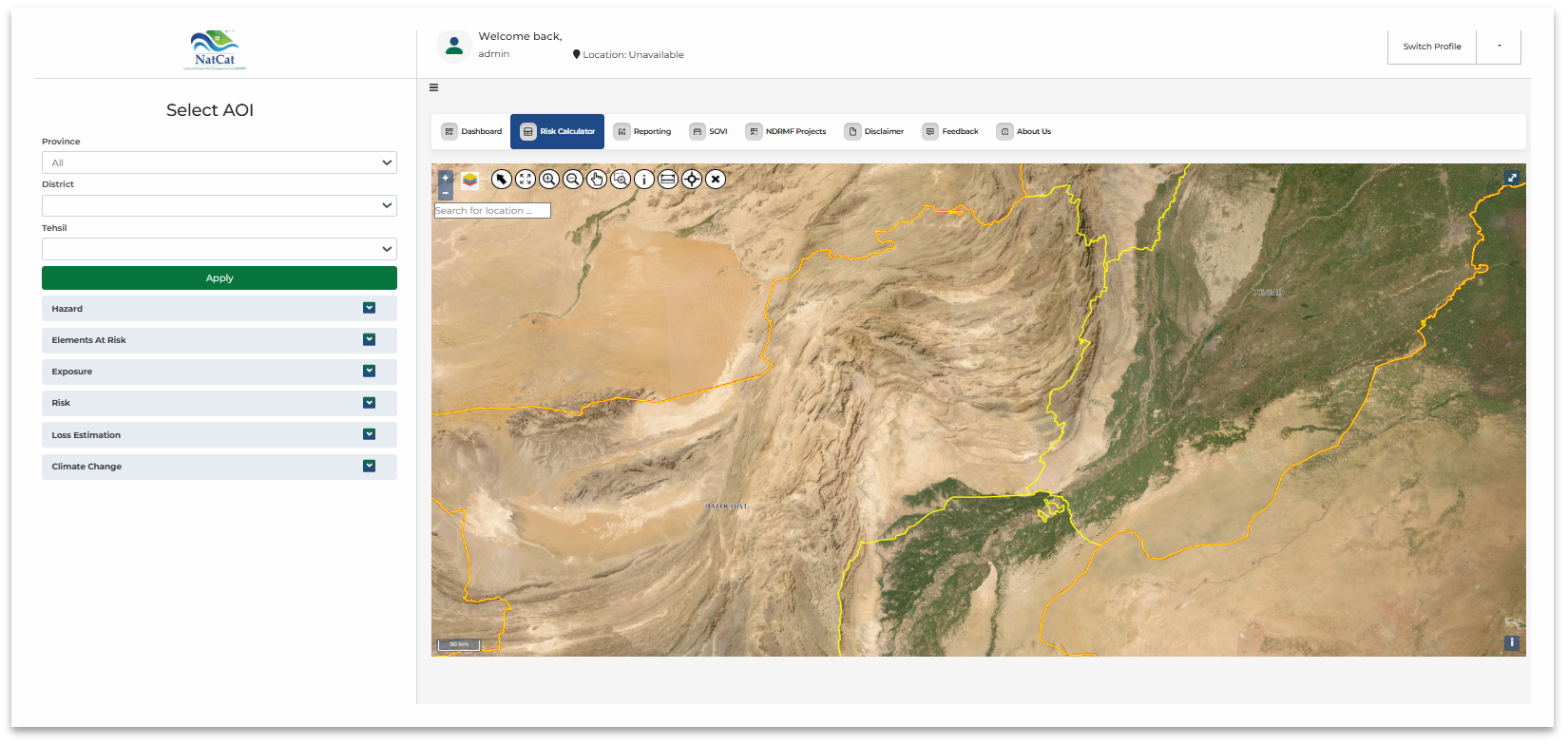
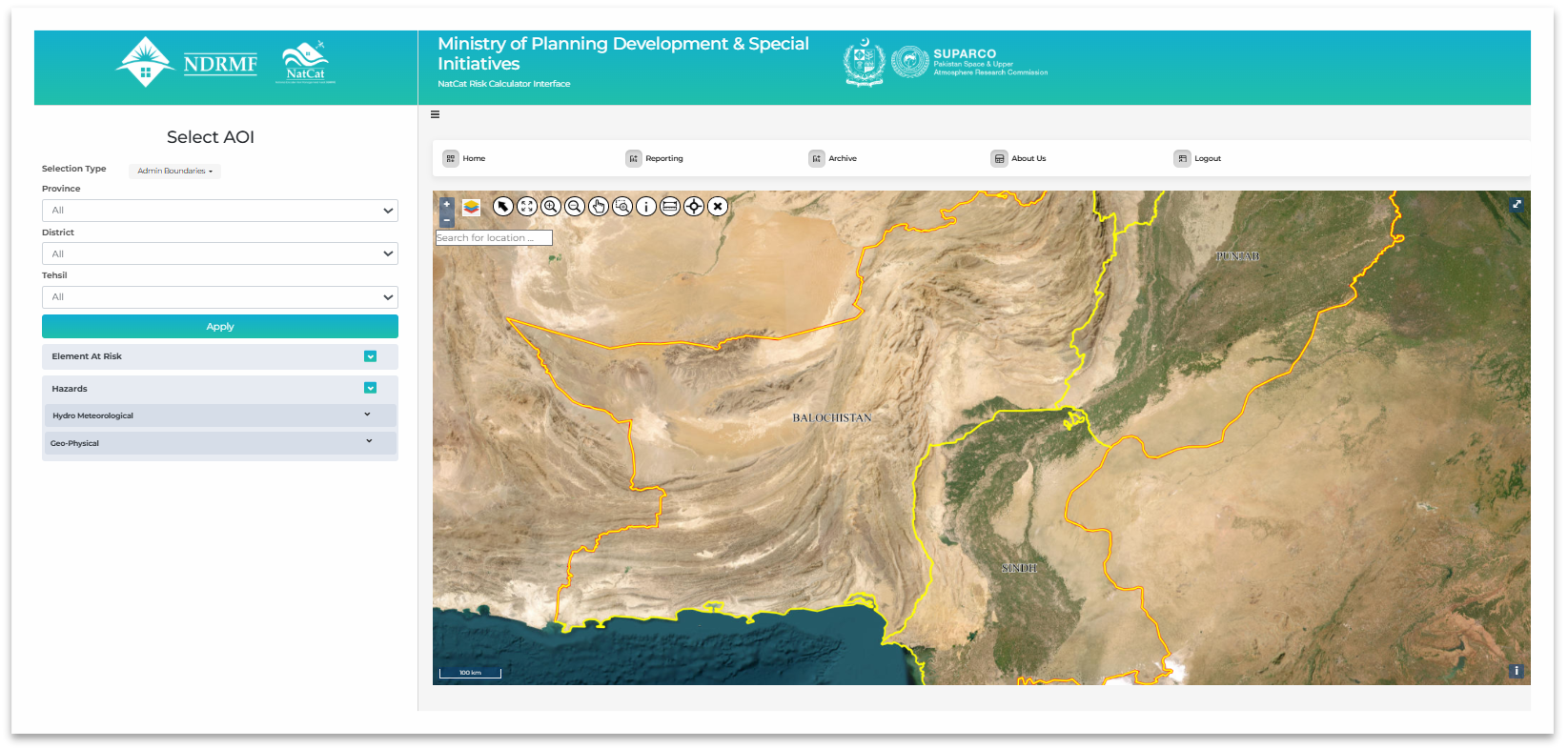
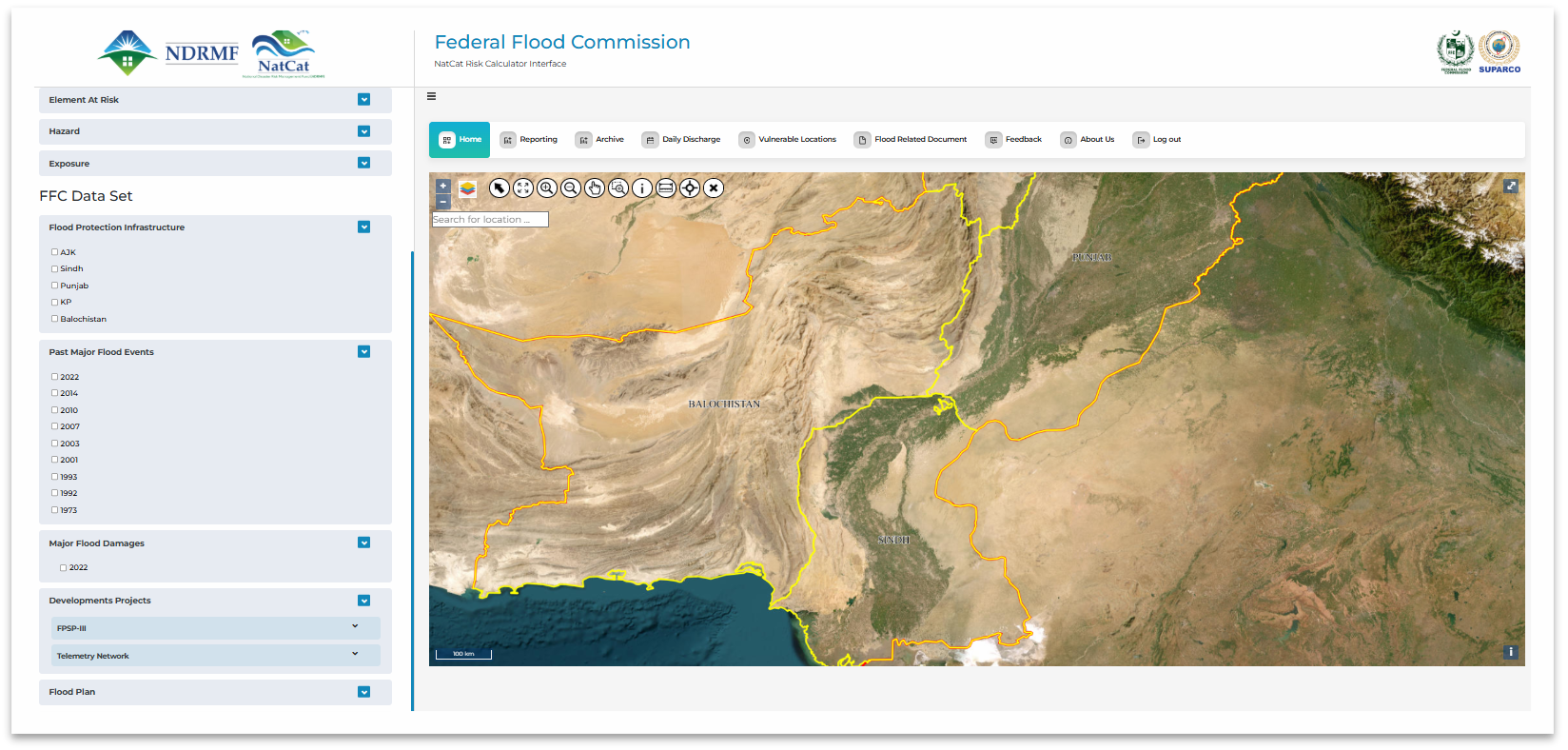
- Satellite Ground Station for receiving data from LEO satellite with resolutions from 50 cm to 20 meters
- Satellite Ground Station for receiving data from medium resolution such as MODIS instrument onboard Aqua/Terra satellites, AVHRR AMBUS, HIRS onboard NOAA series and FY2E, MTSAT from Geostationary satellite
- Operation satellite based COSPAS- SARSAT ground segment with visibility area 2500 km around Karachi, Pakistan
SUPARCO, the Pakistan National Space Agency, was established in 1961 as a Committee and was granted the status of a Commission in 1981. SUPARCO is mandated to conduct research and development in space science, space technology, and their peaceful applications in the country. It works towards developing indigenous capabilities in space technology and promoting space applications for socio-economic uplift of the country.
